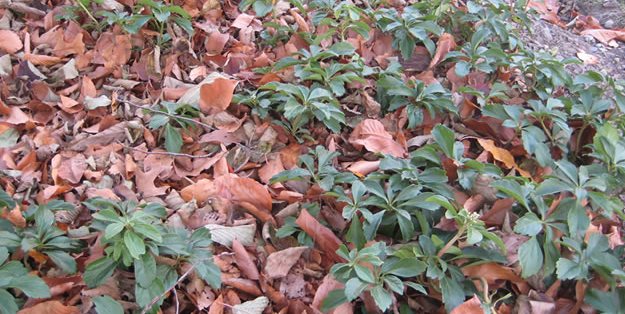The leaves are falling, days are getting shorter, and frost is starting to appear overnight. Unfortunately for most of your garden, these changes mark the end of the growing season. This final blog post in the Garden Guide Series is going to focus on a collection of smaller end of season chores and practices that will set you up for a successful season the following year.
Planting
Yes, I just said this was going to be about the end of the season, and yes you read that right; we’re talking about planting.
As you wrap up this season its time to plant a couple different crops. Crops grown from bulbs such as garlic, elephant garlic (technically a type of leek) as well as many flowers (daffodils, tulips, crocus, etc.) are grown from bulbs planted in the fall, a few weeks before the ground freezes.

Garlic and other bulbs are best planted in furrows, usually 2″ deep. It is important to ensure the bulbs are planted in the correct orientation (for garlic this is the pointed side up). Most bulbs are planted ~6 weeks before the ground freezes, meaning you should plant ~2 weeks before the first frost date. Starting with certified seed garlic is always a good idea, much of the garlic in the grocery store is treated with chemicals to inhibit sprouting, making it less than optimal for planting.
Crop residues
Once disease, pests or frost kills your crops by the end of the season, you’ll need to dispose of the plant material. If your plants died of natural causes (like frost) and had no signs of pest or disease issues, they can be composted (this could be a whole post on its own, so I’m just going to leave a link for further reading). Fallen leaves and rotting Jack-O-Lanterns also make a great addition to compost this time of year.

If your crops were affected by pests or disease, it is a good idea to dispose of them in a way other than composting. At the home garden scale, most compost piles will not get hot enough to destroy these pathogens, and composting plants affected by them can just amplify your problems the following year. For these plants you have a couple options: If it’s allowed in your municipality, you can burn the plants and compost the remaining ashes because the heat destroys any eggs or spores. If burning is outlawed where you live, there is likely a composting service available or you can simply put the plant material out in the paper yard waste bags used for leaves.
Mulching
One of the worst things you can do to garden soil at any point is leave it barren. This is easy to avoid during the summer because you have plants growing, but come winter, once the crop residue has been removed, many people make the mistake of leaving the bare soil exposed to the elements. This can lead to erosion, compaction, nutrient leaching and other issues. The easiest way to fix this is by putting a protective layer on top of the soil. Where would you get this layer you might ask? Its not like it grows on trees…

Actually, it does! One of the easiest, cheapest, and best suited mulches for garden beds over the winter are the very leaves you rake up from all around your yard. The benefits of adding a layer 4-6″ deep of leaf mulch to fallow beds cannot be overstated: It adds organic matter, adds nutrients, improves soil structure and water holding capacity; all in addition to preventing the other bad stuff I just talked about.
Well folks, that’s about all I’ve got for you in this series. Good luck and grow on!

Very interesting read. My mother had gotten into gardening when I was little, and I remember a few of the things you talked about. Granted I was 7 at the time so not everything is really vivid, but as you wrote about compost, I recalled doing the same thing when I was little. Thanks for the flashback.